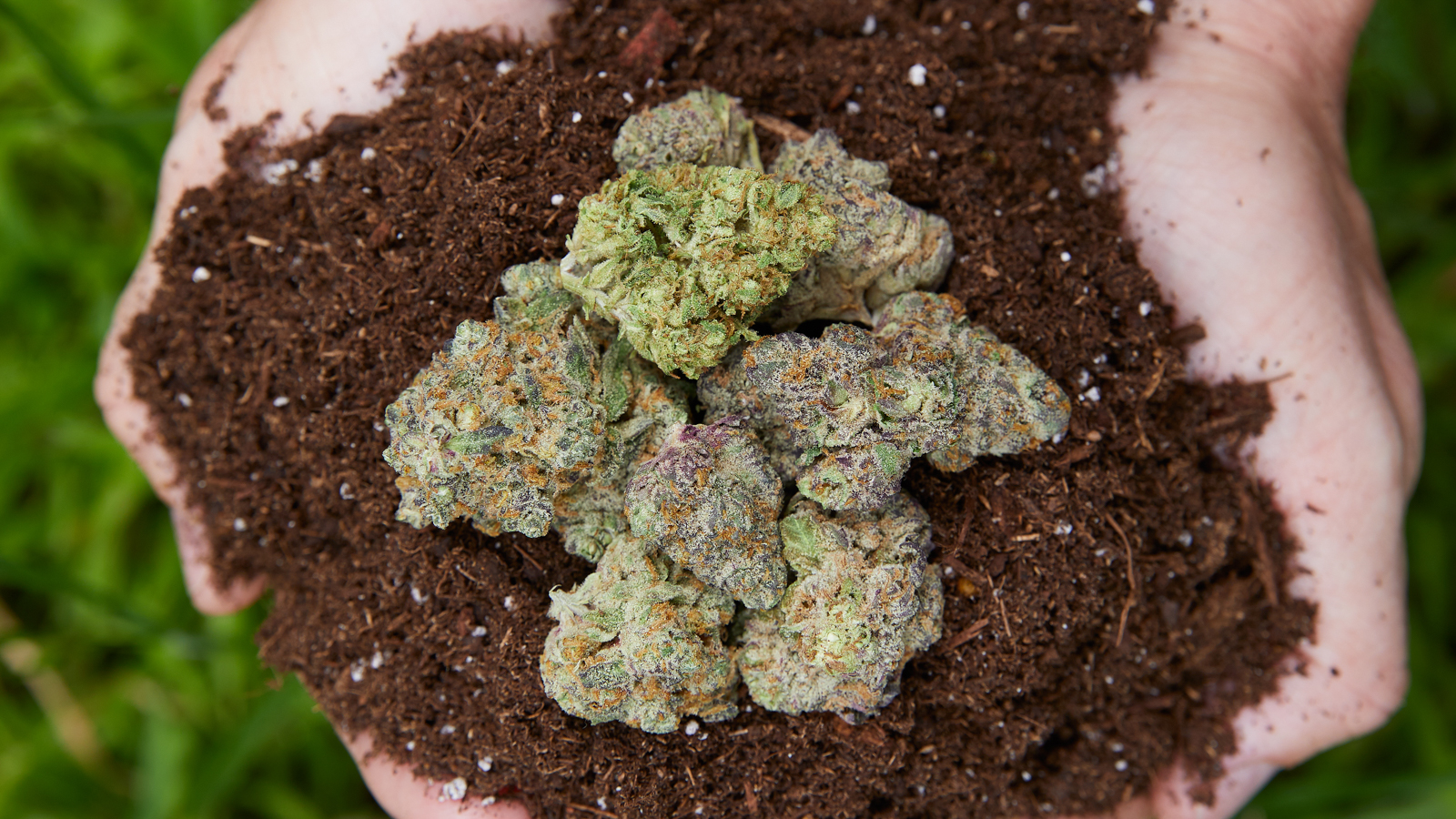
Celebrate Earth Day with certified sustainable weed brands
The cannabis explosion in the United States, coupled with minimal federal government scrutiny, has created a pollution and labeling problem. Toxic rodenticides and pesticides were used in large growing areas in Northern California, according to an article by JSTOR Daily, which then spilled into the surrounding area, killing animals and polluting water sources. And it’s not just the top left side of the ring – according to an article by Cannabistech, Colorado law mandates that cannabis waste must be mixed 50/50 with an approved non-consumable material before it can be sent to a landfill takes discarded products from dumpsters, but this practice nearly doubles the waste production from cultivation facilities. Thankfully, new rules are coming into effect to make the cannabis waste mix more sustainable, but that doesn’t fully make up for what has already been dumped.
In addition to the environmental concerns of an ever growing industry, identifying truthful labels can be a headache for consumers. Because the federal government doesn’t enforce regulations, there aren’t any USDA or FDA approved guidelines for cannabis, so labeling is done at a brand’s whim most of the time
How do you know your “organic” labeled weeds are organic when no one is holding them accountable? Can you trust all cannabis companies to label their products in good faith alone? We hope for the best, of course, but given the multitude of cannabis recalls in California, Colorado, Oklahoma, and other states, that’s not always the case.
Where can we as cannabis users turn if we want to support sustainable growth with organic practices?
The Importance of Clean Green Certified Weed
Chris Van Hook founded Clean Green in 2004. Van Hook was a former attorney who worked on the USDA’s national organic program. Seeing an evolving and ongoing problem in the unregulated cannabis industry, he decided to protect both the environment and cannabis enthusiasts with the Clean Green Certification program.
To receive Clean Green Certified, plants must go through a rigorous testing and inspection routine that reveals pesticide use and sustainability practices. Certification only takes a year, so special growers must maintain their growth ethics on an ongoing basis.
Cristina Buccola, an expert on cannabis law and regulatory programs, told Weedmaps, “The process includes filling out an application, performing an intensive inspection of harvest / facilities / operations, and performing mock exercises.”
Once cannabis is finally legal in all 50 states, federal regulations will no doubt change and grow operations can be kept to much higher standards. Until then, programs like Clean Green have stepped in to fill the void and stay honest.
Sustainable and organic cannabis brands that we love
Just in time for Earth Day, you will find four Clean Green-certified products here that will keep your body and the planet safe.
Lazy Bee Gardens
Lazy Bee Gardens is an award-winning sun-grown flower with no processed fertilizer in sight. She knows how to care for the environment while delivering powerful cannabis. Check out the long list of wet strains and feel the difference to sustainable, sun-grown cannabis.
Available: Washington
Genetics of the Snodgrass family
The plants from Snodgrass Family Genetics grow their cannabis using solar energy, taking into account water and soil protection, and are 100% free of pesticides, chemicals and synthetic fertilizers. Not only can you smoke your little organic cannabis, you can also light it with your own hand-blown glass. Yes, it’s the snodgrass.
Available: Oregon
Sacred solar farms
THC isn’t the only cannabinoid in need of an organic overhaul. Sacred Sun Farms in Montana offers Clean Green certified CBD and THC products and even goes a step further by using Korean methods of natural farming using living soil and sustainable packaging of their varieties.
Available: Montana
Applegate River Roots
Applegate River Roots in southern Oregon is sun-grown in native soils and watered directly from the Applegate River. They pride themselves on their sustainable practices, even using organic cover crops to fortify the native soil, as well as using locally beneficial insects – like ladybugs – for biological pest control.
Available: Oregon
Featured image by Gina Coleman / Weedmaps
Hannah Meadows
Hannah is a Seattle-based writer and editor. She worked in the cannabis industry for three years and continues to learn and research.

Post a comment: